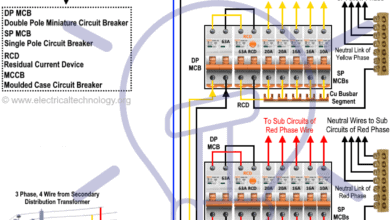The Mini LineFly Drone Robot Saves Birds from Colliding with Power Lines
The Mini LineFly Drone-based Robot Prevents Avian Collisions with Overhead Power Lines
The modern landscape of power transmission has increasingly become a battlefield between human infrastructure and natural wildlife, particularly birds. Power lines pose significant risks to avian species, leading to countless bird fatalities annually. In response to this critical issue, an innovative solution has emerged: the drone-deployed Mini LineFly robot. This advanced robotic system is designed to crawl along power lines. It operates as deploying bird diverters that make power lines more visible to birds, thereby reducing collisions and saving lives.
The Avian Collision Problem
Power lines are often invisible to birds, especially in poor visibility conditions such as fog or at dusk. Consequently, birds frequently collide with these lines, leading to injury or death. Furthermore, this issue is particularly problematic for large birds with limited maneuverability and for species that fly in flocks. Thus, the likelihood of mass casualties in a single incident increases. Additionally, bird collisions not only impact wildlife populations but also cause disruptions in power supply due to outages and maintenance requirements.
A report based on 14 studies concluded that an estimated 12 to 64 million birds are killed each year by U.S. power lines. The data shows that 0.9 to 11.6 million birds are killed by electrocution, while 8 to 57 million birds die from collisions with power lines. These numbers are staggering and deeply heartbreaking.
Traditional Bird Diverter Solutions
Traditionally, Power lineman and engineers manually install bird diverters-devices to to increase the visibility and protection of overhead power lines. These diverters are reflective or glow-in-the-dark objects that alert birds to the presence of the wires.
Some traditional ways to mitigate avian collisions include:
- Marking power lines with hanging markers, insulated stripe, coils, or aviation marker balls to make the wires more visible to birds
- Burying power lines underground
- Routing power lines away from collision-prone specie
However, the manual installation process is labor-intensive, time-consuming, and risky, as it often requires workers to climb poles or use aerial lifts, exposing them to potential electrical hazards.
The Mini LineFly Robot: A Game Changer
The Mini LineFly robot represents a significant advancement in automating the installation of bird diverters. This compact, lightweight robot is designed to be deployed via drone, allowing for quick and efficient installation without the need for human workers to physically access the power lines. Once deployed, the Mini LineFly robot autonomously crawls along the power line, attaching bird diverters at regular intervals.
Key Features of the Mini LineFly Robot:
- Autonomous Operation: The Mini LineFly robot is fully autonomous. It navigates power lines independently. It detects obstacles, navigates around them, and continues along the line. This ensures comprehensive coverage.
- Precision Deployment: The robot has a mechanism to attach bird diverters precisely. It places them at optimal intervals. This maximizes their effectiveness in alerting birds to the power line.
- Lightweight and Portable: The Mini LineFly robot is lightweight and compact. It’s designed to be carried by drones. This makes it easy to deploy in remote or hard-to-reach areas.
- Safety and Efficiency: The Mini LineFly robot eliminates the need for workers to climb poles or use aerial lifts. It enhances safety and significantly reduces installation time.
The drone-deployed Mini LineFly robot is a groundbreaking solution to the problem of bird collisions with power lines. By automating the installation of bird diverters, the robot enhances both safety and efficiency while making a substantial contribution to bird conservation efforts. As the integration of robotics and drone technology continues to evolve, the Mini LineFly robot represents a promising step toward a future where power infrastructure and wildlife can coexist more harmoniously
Drone-Assisted Deployment
The drone-base Mini LineFly robots are equipped with a payload system. They carry the robot to the desired section of the power line and release it. This method allows for rapid deployment. It works well across vast areas, including remote or hazardous locations.
Traditional methods struggle to reach these spots. The combination of drones and the Mini LineFly robot reduces costly and risky manual interventions. It streamlines the process and enables widespread installation of bird diverters.
Impact on Bird Conservation and Power Infrastructure
The deployment of the Mini LineFly robot has the potential to make a significant impact on bird conservation efforts. The robot increases the visibility of power lines. This reduces the likelihood of bird collisions. It protects bird populations and contributes to biodiversity preservation. Fewer bird collisions also benefit power infrastructure. This leads to fewer outages and less maintenance.
Wider Applications and Future Prospects
Although the primary focus of the Mini LineFly robot is bird conservation, its technology has broader potential. Specifically, it could be used in power line maintenance and monitoring. The robot’s autonomous crawling and precise deployment of small devices can be adapted. For example, it could inspect power lines for damage. Additionally, it could apply protective coatings or clean insulators.
Moreover, future advancements in robotics and drone technology could further enhance systems like the Mini LineFly robot. As a result, more complex maintenance tasks could be performed autonomously. This would not only improve the efficiency of power line maintenance but also help protect wildlife. Ultimately, it would ensure the reliability of power infrastructure.
Related Posts:
- Which One Kills ? Current or Voltage and Why? Amps vs Volts
- Which One is More Dangerous? 120V or 230V and Why?
- AC or DC ? Which One is More Dangerous And Why ?
- Which One is More Dangerous? 50Hz or 60Hz in 120V/230V & Why?
- Why are “High Voltage” Signs used when Only Current Kills?
- Is Lightning AC or DC ?
- Electrical Shock Hazards & Its Effects on Human Body
- Protective Actions to Avoid & to Reduce Electric Hazardous
- Personal Protective Equipment (PPE) for Electrical Works








90% of the population doesn’t care about birds hitting power lines. They only want reliable electricity from the suppliers. People in the midwest who are trying to deal with an overpopulation of messy Canada geese would love more of them to hit power lines if it is fatal for the bird and does not interrupt power.